Table of Contents
LVT flooring offers homeowners unmatched durability with its unique construction of at least five fused vinyl layers. You might be wondering what LVT flooring actually is and why it’s becoming a popular choice for modern homes. LVT stands for Luxury Vinyl Tile, a versatile flooring option that combines esthetic appeal with practical benefits.
Not only is LVT flooring water-resistant and ideal for moisture-prone areas like bathrooms and kitchens, but it also boasts impressive antimicrobial properties that reduce bacteria by over 99.9%. Additionally, these floors require minimal maintenance, needing just a simple two-bucket cleaning system for regular upkeep. If you’re concerned about sustainability, you’ll be pleased to know that LVT flooring meets WELL and LEED certification standards, making it an environmentally conscious choice. Furthermore, with options ranging from authentic woodgrains to vibrant colors, you’ll have extensive design freedom to match any home décor style.
Throughout this comprehensive guide, you’ll discover everything you need to know about LVT flooring, from installation techniques to maintenance tips that will help you make an informed decision for your home in 2025.
Understanding LVT: What Homeowners Should Know
Luxury vinyl flooring has transformed modern home design with its perfect blend of esthetics and functionality. Before diving into specific applications, let’s unpack what this innovative flooring solution actually entails.
What is LVT?
When exploring what LVT flooring means, you’ll discover it stands for Luxury Vinyl Tile. In essence, LVT is an advanced, multi-layered flooring product engineered to replicate the appearance of natural materials while offering superior performance characteristics. Unlike traditional vinyl flooring of the past, LVT features a sophisticated construction of multiple layers fused together under heat and pressure.
The magic of LVT flooring lies in its layered composition:
- Protective Wear Layer: This transparent top layer provides resistance to scratches, scuffs, and daily wear. Thickness typically ranges from 0.3mm for residential use to 0.7mm+ for commercial applications.
- Decor or Print Layer: A high-resolution photographic film carrying realistic wood grain, stone patterns, or abstract designs.
- Vinyl Core Layer: The main body providing structure, stability, and waterproof properties. This may be traditional flexible PVC, SPC (Stone Plastic Composite), or WPC (Wood Plastic Composite).
- Backing Layer: Provides foundational stability and balance, with many modern products featuring pre-attached underlay for improved comfort and sound dampening.
Most LVT products are available as individual tiles or planks (LVP – Luxury Vinyl Plank), offering versatile design possibilities beyond what traditional sheet vinyl could achieve.
LVT flooring what is it used for?
Given its exceptional versatility, LVT flooring serves numerous purposes throughout your home. First of all, its waterproof nature makes it ideally suited for moisture-prone areas where traditional flooring options might fail. You can confidently install it in bathrooms, kitchens, basements, and utility rooms without worrying about water damage.
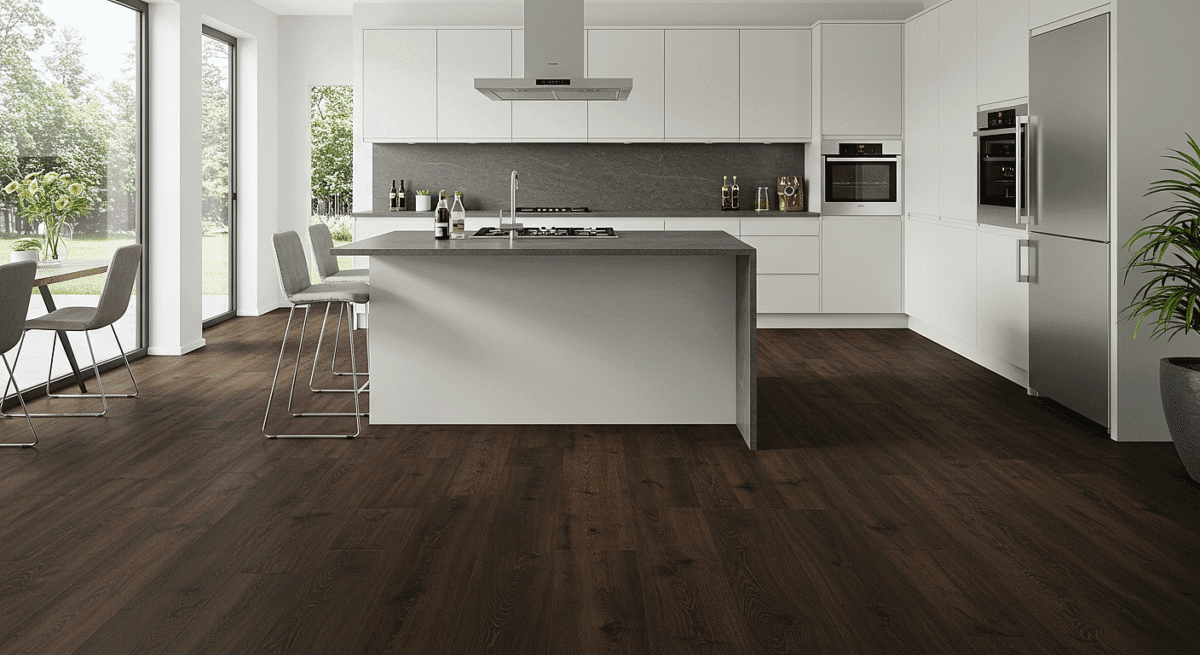
For households with children and pets, LVT offers remarkable durability against scratches, scuffs, dents, and stains. The robust wear layer effectively withstands high foot traffic, making it perfect for busy entryways, hallways, and living spaces.
Moreover, LVT provides comfort underfoot that harder materials like ceramic tile cannot match. Its slightly softer, warmer feel makes a noticeable difference in your daily experience. Specifically, the WPC variety incorporates wood pulp or flour with PVC and foaming agents, creating an even warmer, softer walking surface with excellent acoustic properties.
Another major advantage is LVT’s compatibility with underfloor heating systems, providing evenly distributed warmth throughout your home. This pairing enhances comfort while maintaining the floor’s structural integrity.
Why it’s gaining popularity in 2025
LVT flooring continues to dominate the market in 2025 for several compelling reasons. Primarily, technological advancements by leading manufacturers have dramatically improved the realism of designs. Modern LVT features enhanced textures and details that make distinguishing between vinyl and natural materials increasingly difficult.
The exceptional durability-to-cost ratio makes LVT particularly attractive in today’s market. You get the appearance of high-end materials like hardwood, stone, or ceramic at a significantly lower price point without sacrificing longevity or performance.
Furthermore, contemporary environmental concerns have driven manufacturers to develop more sustainable options. In 2025, many producers offer eco-friendly LVT made with recyclable materials and free from harmful chemicals. These products contribute to healthier indoor air quality while reducing environmental impact.
Installation flexibility remains another strong selling point. Whether you prefer DIY-friendly click-lock systems or professional-grade glue-down formats, LVT accommodates different skill levels and subfloor conditions. This versatility makes renovations simpler and more accessible for average homeowners.
Above all, LVT’s minimal maintenance requirements appeal to busy modern lifestyles. A simple sweep or vacuum with a soft brush head and occasional damp mopping with pH-neutral cleaner is typically sufficient to maintain its appearance for years to come.
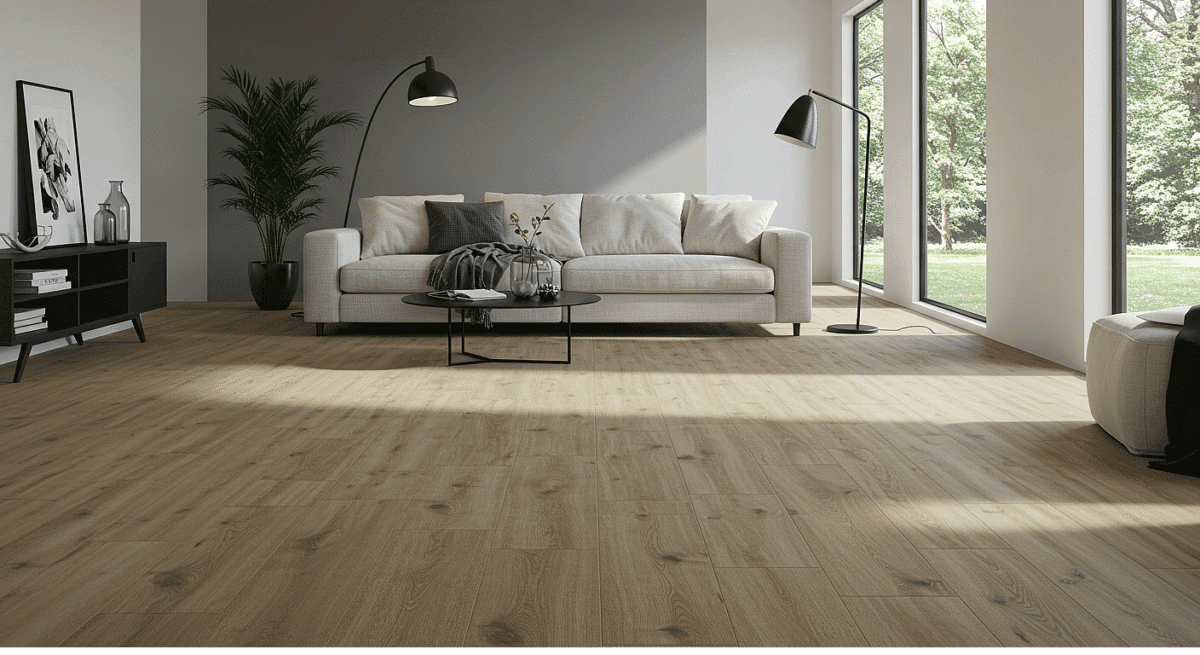
Comparing LVT to Other Flooring Options
When choosing new flooring for your home, comparing options is essential to find the perfect match for your needs. LVT flooring offers unique advantages when matched against other popular alternatives.
LVT vs laminate
Though often confused with each other, LVT and laminate flooring have fundamental differences in their construction. LVT consists of multiple PVC layers, whereas laminate is made from High Density Fibreboard (HDF) – essentially recycled wood pulp pressed together under intense pressure.
The most significant difference between these materials lies in their water resistance. LVT’s PVC composition makes it completely waterproof, allowing it to be submerged without damage. Conversely, laminate contains a wooden fiber core that doesn’t tolerate moisture well and can swell or warp when exposed to water for extended periods.
Regarding durability, both options resist scratches effectively thanks to their protective wear layers. However, LVT edges ahead because it can be recoated with a new wear layer if damaged, which isn’t possible with laminate. This contributes to longer warranties for LVT products compared to laminate.
Cost-wise, laminate typically ranges from £18-£31 per square meter including installation, making it generally more affordable than basic LVT which starts around £20 and can reach £50 per square meter for premium options.
LVT vs hardwood
Price point represents one of the most striking differences between these options. LVT sits comfortably in the mid-range price bracket, making it substantially more affordable than high-quality hardwood which requires significant investment.
Despite the lower cost, LVT doesn’t sacrifice esthetics. Modern LVT remarkably replicates the appearance of natural wood with impressive realism. Nevertheless, hardwood offers unique characteristics impossible to fully duplicate – each plank features distinct knots and grain patterns, whereas LVT designs are digitally perfected for consistency.
In terms of practical considerations, LVT outperforms hardwood in several areas:
- Moisture resistance: LVT handles wet environments like bathrooms and kitchens where hardwood would deteriorate
- Maintenance: Hardwood requires regular upkeep and treatment costs, while LVT needs minimal maintenance
- Durability: LVT withstands scratches, scuffs, and dents better than hardwood, especially important in households with children or pets
However, hardwood still maintains an edge in home value enhancement and longevity. With proper care, hardwood floors can be sanded and refinished multiple times throughout their lifespan.
LVT vs ceramic tiles
Ceramic tiles have long dominated moisture-prone areas like bathrooms and kitchens, but LVT presents compelling competition. Installation represents a major difference – ceramic tile requires extensive surface preparation, specialized cutting tools, and complex grouting. Meanwhile, LVT installation is approximately 60% quicker and costs 40% less than ceramic tile installation.
Comfort underfoot distinguishes these options significantly. LVT provides a warmer, softer surface compared to ceramic tile’s notably cold and hard feel, particularly in winter months. Additionally, ceramic tile amplifies sound, whereas LVT offers excellent sound-dampening qualities.
Both materials provide excellent water resistance, though ceramic’s grout lines can become problematic over time, requiring regular sealing and maintenance. Ceramic tile is slightly more water-resistant than LVT but is prone to cracking if heavy objects are dropped on it.
For durability, ceramic offers extraordinary longevity – potentially lasting 40 years compared to LVT’s average 10-year lifespan. Nevertheless, LVT better resists impact damage and doesn’t chip or crack like ceramic can when subjected to dropped objects.
Installing LVT Flooring: What to Expect
Proper installation is crucial for ensuring your LVT flooring delivers its full potential in terms of appearance and longevity. As a premium flooring option, LVT requires specific preparation and techniques to achieve professional results.
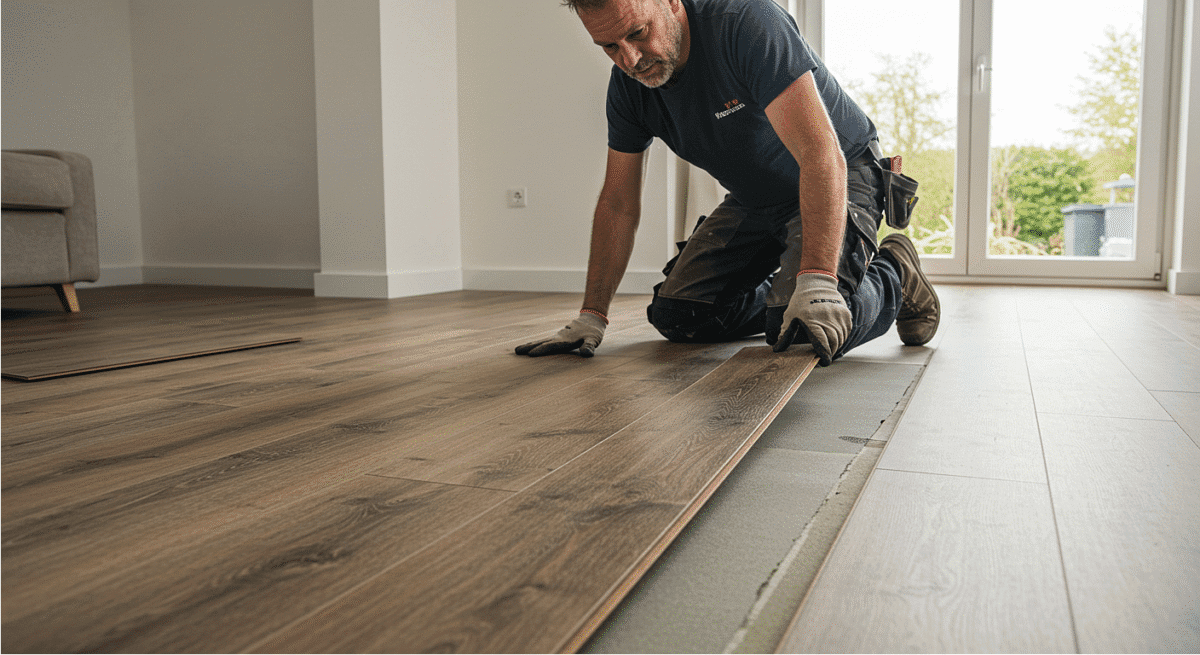
Surface preparation essentials
Successful LVT installation starts with meticulous subfloor preparation. First, thoroughly inspect your existing floor for any unevenness or damage. For concrete subfloors, relative humidity must be below 75% to avoid moisture-related issues. If readings exceed this level, you’ll need to apply a suitable moisture suppressant or damp-proof membrane before proceeding.
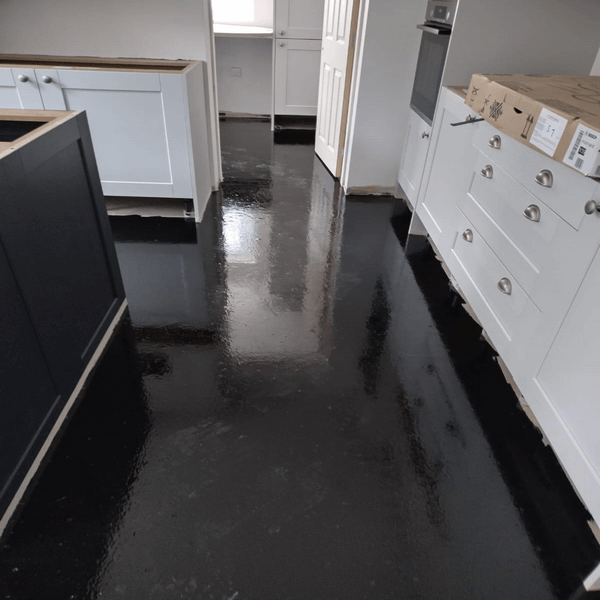
Next, remove all laitance (fine particles on the surface) and contaminants through mechanical means to ensure proper bonding of preparation products. Any bumps or irregularities in the subfloor will eventually show through your LVT, hence the importance of checking for unevenness:
- Repair gaps wider than 5mm and deeper than 2mm
- Level out irregularities greater than 1mm over 20cm length
- Address unevenness exceeding 4mm over 2m length
Underlay and acclimatization
Prior to installation, LVT flooring must acclimatize to your home’s environment for at least 48 hours. This critical step allows the materials to adjust to room temperature, preventing future warping or cracking. Place the flooring flat in small stacks around the installation room, maintaining a constant temperature between 18-27°C (ideally around 22°C).
Regarding underlay, requirements differ by installation method. Click-lock LVT often utilizes underlay to smooth minor subfloor imperfections and improve comfort. Conversely, glue-down LVT connects directly to the subfloor without underlay, as adding cushioning would compromise stability.
Click-lock vs glue-down systems
These two primary LVT installation methods offer distinct advantages. Click-lock creates a “floating floor” where planks connect without adhesive, making it substantially more DIY-friendly. Since it’s not permanently attached, this system can accommodate minor subfloor imperfections.
Alternatively, glue-down LVT provides exceptional stability and longevity, particularly for high-traffic areas. This method requires spreading adhesive evenly using a serrated trowel held at approximately 60 degrees to maximize coverage. Although more labor-intensive, glue-down installation typically lasts longer without shifting, making it ideal for commercial spaces.
Cutting around obstacles and door frames
LVT’s flexibility makes it relatively easy to cut using several methods. For straight cuts, the plank is scored with a utility knife along a straight edge, then snapped along the scored line. For fitting around toilets or pipes, a template would be made by:
- Placing paper beside the obstacle, overlapping the last row of planks
- Cutting a hole slightly smaller than the obstacle
- Wrapping paper around the obstacle and trimming excess
- Using the template to mark cutting lines on your LVT
Advanced cuts may require tools like jigsaws for curved corners or chop saws for perfect 90-degree angles.
Maintaining and Cleaning LVT Floors
Proper maintenance is key to preserving the beauty of your LVT floors for years to come. By following a simple care routine, your luxury vinyl tile flooring can retain its original appearance with minimal effort.
Daily and weekly cleaning tips
First, establish a regular cleaning schedule that includes daily sweeping or vacuuming to remove loose dirt and debris that could potentially scratch your LVT flooring. For vacuuming, remember to remove the beater bar or use a model without one to prevent damage to the surface.
For weekly maintenance, use a damp (not wet) mop with a pH-neutral cleaner specifically formulated for vinyl flooring. Consequently, this prevents buildup of dirt while maintaining the floor’s protective layer. Many manufacturers provide their own branded cleaners that have been tested and proven to deliver optimal results.
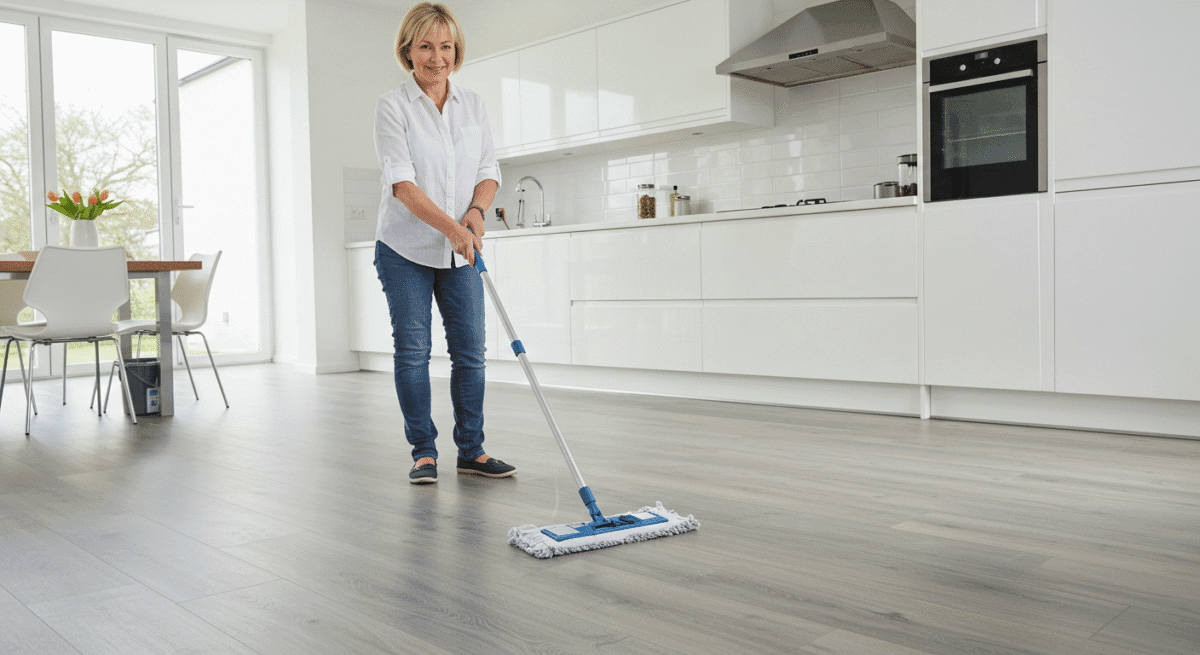
Spills should be wiped up immediately, regardless of LVT’s water-resistant properties. Prompt action prevents stains from setting and liquid from seeping through joints into the subfloor.
What to avoid when cleaning
Never use steam mops on LVT flooring as the intense heat can damage the floor and potentially cause warping or lifting of tiles from adhesive. Similarly, avoid using excessive water which can destroy the glue bond and cause corners to curl up.
Certainly avoid harsh chemicals such as bleach, ammonia, or vinegar-based cleaners as these can discolor or damage several layers of your LVT. Indeed, “mop and shine” products leave unwanted residues that dull your floor’s appearance over time.
Abrasive cleaning tools like hard scrubbing brushes or scouring pads should be avoided as they can scratch the protective wear layer.
How to keep it looking new
Place doormats at entryways to trap approximately 80% of outside dirt and moisture before it reaches your floors. Primarily, choose mats without rubber backing as they can cause discoloration.
Attach felt pads to furniture legs to prevent scratches and dents. Heavy furniture can leave permanent marks, so floor protectors are essential for preserving your LVT flooring’s surface.
For stubborn stains, create a paste using baking soda (two teaspoons) and water (one teaspoon), applying it directly to the affected area. This helps remove practically any stain without damaging the floor.
Occasionally inspect your floor for potential damage and address issues promptly. Undoubtedly, regular maintenance and preventative measures will extend the life of your LVT flooring while keeping it looking fresh and clean.
Design Flexibility and Customization
One of the most appealing aspects of LVT flooring lies in its remarkable design versatility. From traditional looks to bold statements, LVT adapts to almost any interior vision you might have.
Wood, stone, and abstract styles
LVT flooring reigns supreme in mimicking natural materials with astonishing realism. Modern manufacturing techniques create authentic-looking wood textures in various species including oak, cherry, and walnut patterns with impressive detail. For stone enthusiasts, LVT replicates marble, slate, travertine, and limestone with realistic depth and textures.
Beyond natural imitations, LVT offers abstract patterns, geometric shapes, and artistic motifs in countless color variations. Some collections even feature designer collaborations, such as Tarkett’s partnership with Peclers, a renowned Parisian Design Agency, to create 33 hues across five distinct colour palettes ranging from “Deep Darks” for elegant spaces to “Bold Primaries” for playful interiors.
First of all, if you’re seeking truly personalized options, many manufacturers now offer customizable LVT solutions where you can mix shapes and colors to create unique flooring designs. These systems often include online configurators that help visualize your custom pattern before purchase.
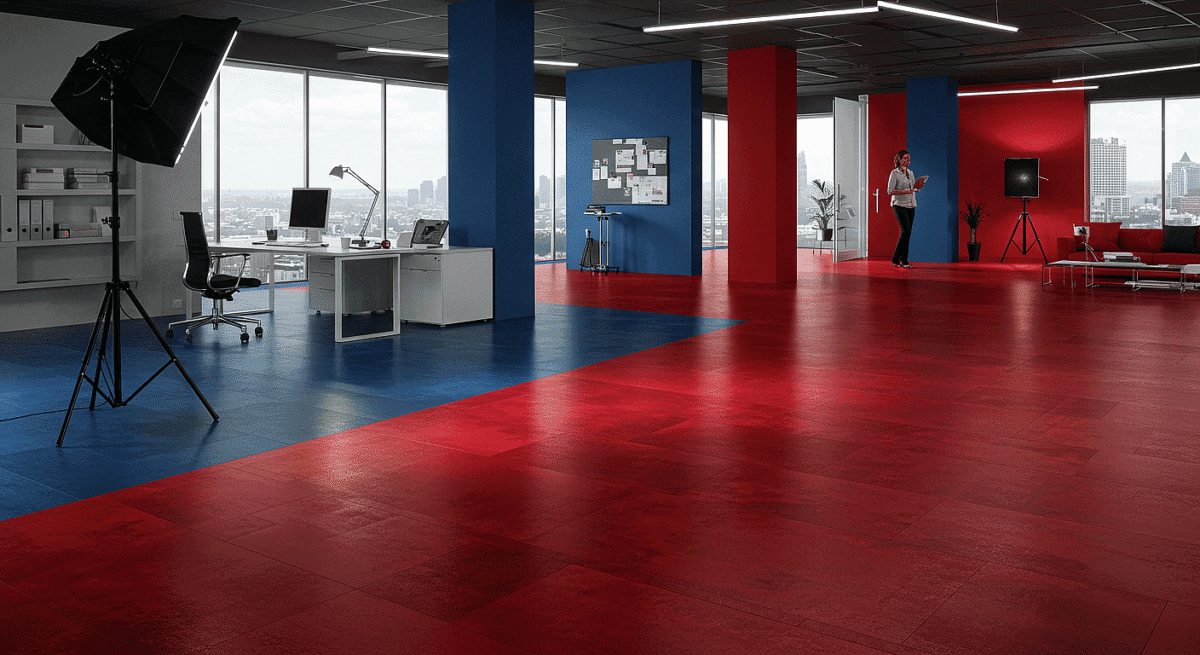
Laying patterns and visualizers
The arrangement of your LVT planks or tiles dramatically impacts the overall esthetic. Popular laying patterns include:
- Herringbone: Creates a V-shaped zig-zag effect that makes rooms appear longer and wider
- Straight/Stripwood: Traditional horizontal or angled planks for a classic look
- Basket weave: Reminiscent of rustic textiles, adding geometric appeal
- Checkerboard: Trending layout using alternating colors for visual interest
To remove guesswork from your design decisions, most major LVT manufacturers now offer room visualizer tools. These digital platforms allow you to upload photos of your own space and virtually “install” different flooring options. As well as seeing various styles, you can experiment with laying angles, patterns, and even add feature strips before making your final selection.
Matching LVT with home decor
Coordinating your LVT flooring with existing decor starts with identifying the floor’s dominant tones. For instance, warm-toned herringbone floors typically complement traditional interiors, while lighter colors create a more contemporary atmosphere.
When selecting wall colors, consider whether your LVT has warm undertones (hints of red, orange, or yellow) or cool undertones (hues of gray, blue, or purple). For harmonious design, match warm floors with warm wall colors, or create intentional contrast using colors opposite on the color wheel.
Furniture selection deserves equal consideration—light floors pair beautifully with Scandinavian-style pieces, while darker LVT complements rich wood furniture. In fact, area rugs can define spaces and add softness above your vinyl flooring, creating layered visual interest.
Conclusion
Finding Your Perfect LVT Solution
Throughout this comprehensive guide, we’ve explored the remarkable world of Luxury Vinyl Tile flooring. LVT stands apart from traditional options with its exceptional durability, water resistance, and minimal maintenance requirements. After examining its unique construction and comparing it to alternatives like laminate, hardwood, and ceramic tile, you can see why LVT continues gaining popularity among homeowners in 2025.
Certainly, LVT offers significant advantages beyond mere practicality. Its extensive design versatility allows you to achieve virtually any esthetic vision – from authentic wood grain patterns to elegant stone replicas or bold abstract designs. This impressive adaptability means your floors can perfectly complement your existing decor while providing superior performance characteristics.
Installation flexibility represents another compelling benefit, whether you prefer DIY-friendly click-lock systems or professionally installed glue-down applications. Though proper surface preparation remains essential, LVT generally installs faster and with fewer complications than many traditional flooring materials.
The remarkable balance of esthetics and function makes LVT an ideal solution for modern homes. While no flooring option delivers perfection in every category, LVT excels across crucial factors like moisture resistance, comfort underfoot, and design versatility. Most importantly, it accomplishes this without the premium price tag associated with natural materials like hardwood or stone.
Therefore, as you consider your flooring options, LVT deserves serious consideration for its unmatched combination of style, durability, and value. Your perfect flooring solution might just be a luxury vinyl tile away.
FAQs
Q1. What are the main advantages of LVT flooring? LVT flooring offers exceptional durability, water resistance, and minimal maintenance requirements. It’s also highly versatile in design, replicating the look of natural materials like wood and stone while being more affordable and easier to install.
Q2. How does LVT flooring compare to hardwood? While hardwood offers unique natural characteristics, LVT is more affordable, water-resistant, and easier to maintain. LVT also provides better scratch and dent resistance, making it ideal for households with children or pets.
Q3. Is LVT flooring suitable for bathrooms and kitchens? Yes, LVT flooring is excellent for moisture-prone areas like bathrooms and kitchens due to its water-resistant properties. It can withstand spills and humidity better than many traditional flooring options.
Q4. How do I clean and maintain LVT floors? Regular maintenance involves daily sweeping or vacuuming and weekly damp mopping with a pH-neutral cleaner. Avoid using steam mops, harsh chemicals, or abrasive cleaning tools. Promptly clean up spills and use furniture pads to prevent scratches.
Q5. Can LVT flooring be installed over existing floors? In many cases, LVT can be installed over existing floors, provided the surface is clean, dry, and level. However, proper subfloor preparation is crucial for a successful installation. It’s best to consult with a flooring professional to assess your specific situation.